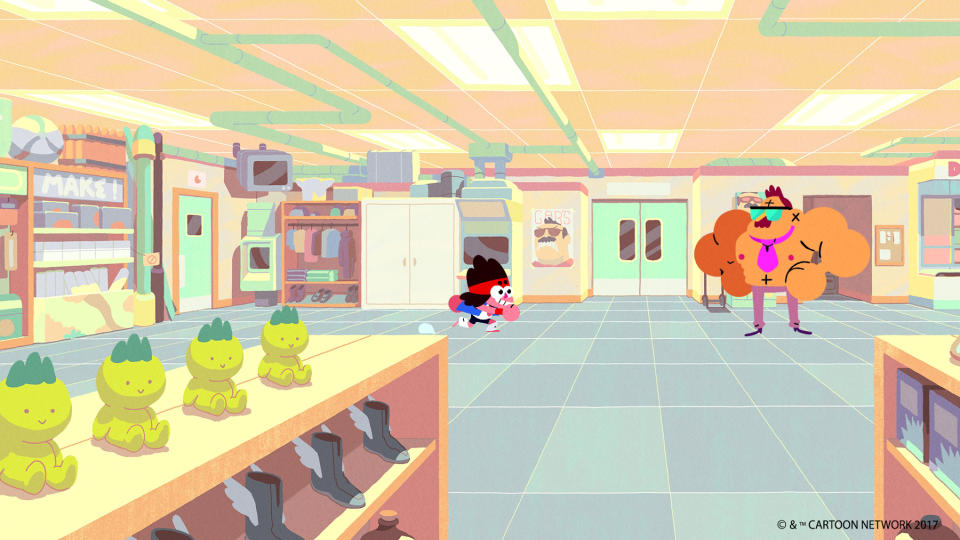Engadget has been testing and reviewing consumer tech since 2004. Our stories may include affiliate links; if you buy something through a link, we may earn a commission. Read more about how we evaluate products.
‘OK K.O.’ is a brilliant cartoon with a game to match
Cartoon Network and Capybara are challenging how cartoons and tie-in games are made.
With his small, boxy stature and pin-thin legs, K.O. doesn't look like much of a superhero. But that's the whole point of OK K.O.! Let's Be Heroes, an animated series from Cartoon Network. The titular character is a powerhouse-in-training, full of naive wonder and a hunger to pummel bad guys. He works in a convenience store run by Mr. Gar, one of the world's greatest superheroes, alongside fellow rookies Radicles and Enid. Together they battle the mischievous robots sent from a factory called Boxmore across the road, learning about friendship and hard work along the way.
The show will premiere this August with, if all goes to plan, a tie-in game called OK K.O.! Let's Play Heroes alongside it. The release is unusual for two reasons: One, this type of game is usually developed after a show has been launched and drawn a large, lucrative audience. Two, they're typically low-quality or made by studios with a lacklustre pedigree. Capy Games, meanwhile, is an independent studio with bags of talent. It started its business with licensed games, but has since released a string of original hits, including Superbrothers: Sword & Sworcery EP and Super Time Force.
The show
The collaboration wouldn't have been possible without Ian Jones-Quartey. The writer, storyboard artist, animator and voice actor has worked on a range of cartoons, including Adventure Time and Steven Universe. In 2011, he pitched a show to Cartoon Network that combined two of his favorite pastimes, video games and wrestling, as well as his experiences growing up and working in a strip mall. That became Lakewood Plaza Turbo, a pilot that Jones-Quartey wrapped up in 2012. Cartoon Network was intrigued by the idea and asked if he would develop the concept further using a mobile game.
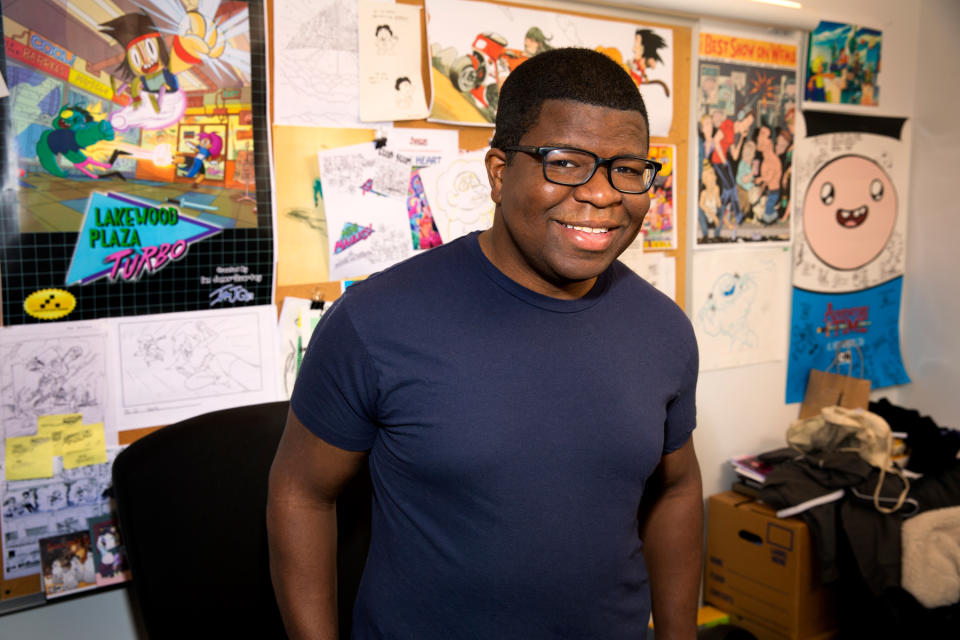
OK K.O.! Lakewood Plaza Turbo was released on iOS and Android in February 2016, alongside three animated shorts. Additional "minisodes" were released on YouTube in December and January 2017, fleshing out the world and the colorful characters who inhabit it. Jones-Quartey and the show's executive producer, Toby Jones, worked on the storyboards; however, each episode was animated by a different studio. They all have a unique style, but are clearly part of a collective whole. If you watch them all in one swoop you'll have a thorough understanding of K.O., his friends, and what makes them such interesting characters.
The game, the shorts -- it was all necessary to greenlight the full series. "All of that stuff was us figuring out more about the show itself," Jones explains. "We took what we learned from all of those different game-centric things to help develop and get the show picked up. We repitched it and said, 'This is what we've learned, this is where we're at' and it got [Cartoon Network] all the more excited about it and led to [OK K.O.] finally becoming a show."
Cartoon Network's gaming division knew the team at Capybara Games and told them about the project. Before long, Jones-Quartey and Jones were in a room with a couple of storyboards pitching the Toronto-based studio their vision for OK K.O. "We get asked a lot to make games for other people's stuff, like other licenses, brands and IPs, and we always say no because it's never really enough space for us to create the thing that we feel passionate about creating," Nathan Vella, co-founder and president of Capy Games said. But this project was different. Cartoon Network was pitching a parallel production that would encourage experimentation and unique, creative treatments.
"It was a very strange thing for us to agree to collaborate and create based on something that only barely existed," Vella said. "I mean, the trust that Ian and Toby put in us to do right by their creation, we were also putting trust in them to not screw it up."
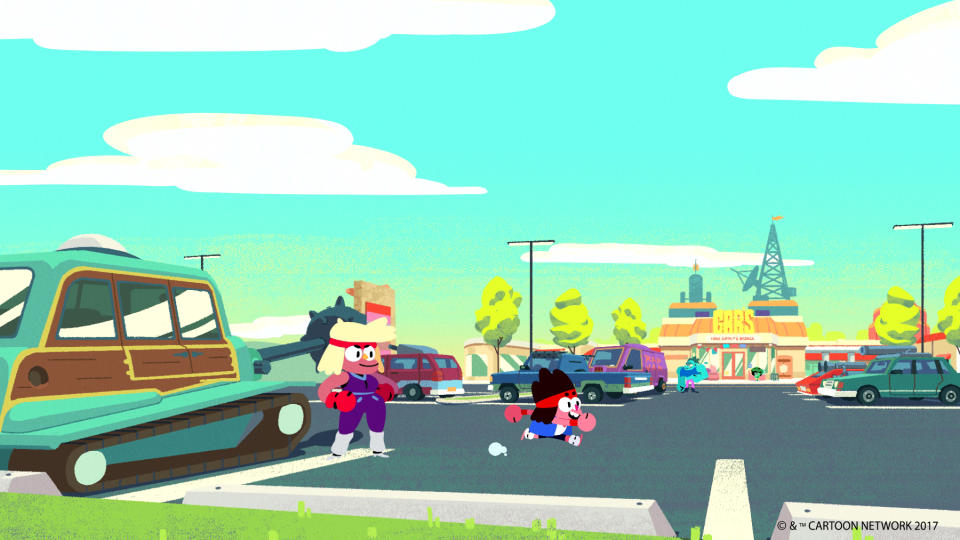
The game
Capy's game is a bright, cheery blend of genres. It's partly an adventure game, with meticulously drawn 2D environments portraying Lakewood Plaza, Gar's Bodega and the robot Boxmore factory. You run around as K.O. and pick up quests from the show's standout characters: One mission, for instance, has you hiding in the carpark to catch an elusive vandal who keeps spray painting Rad's van. The culprit, unsurprisingly, is an android that wants nothing more than to make your life a misery. It's here that the game then shifts into a 2D fighter, with simple but stylish combos and special summons.
"This is a game that I've really wanted to make," Vella says. "I love fighting games, I love brawlers and I love marrying genres together. In the history of Capy, we've never really made something that fits in that fighting-game-brawling space, even though it's my favorite genre. So this game is something that's been percolating at the studio and at some point we probably would have wanted to make." The game has plenty of throwbacks to the show and humor that can be enjoyed by all ages. It's also surprisingly deep, with a combat system that doles out style, strength and other useful stat bonuses depending on your performance in battle.
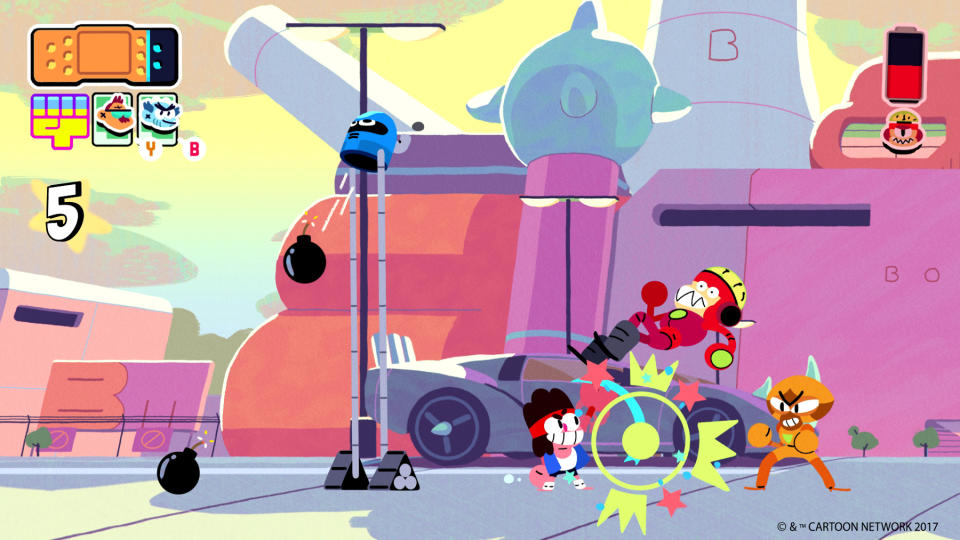
"We were figuring things out in the show at the same time as they were figuring them out in the game," Jones-Quartey said. "So week-to-week, any time we came up with something, be it a new design, a new storyboard, new animatics, things we working on for the show, Capy had access to all of it. So we were just sharing whatever we were making with them, and they were sharing their stuff with us. They were telling us about solutions they were coming up with, and then we would be like, 'Oh, that's a good idea, maybe we can work that into the show.'"
It's a true collaboration that wouldn't have been possible unless Jones-Quartey was willing to give up a degree of creative control. He describes OK K.O. as a "playground" for creativity, a property that embraces different interpretations. The show and the game, for instance, have completely different art styles, like the shorts that were released on YouTube. "One of the things I was a big proponent of very early on was, 'Look, instead of having a stranglehold on what it is, we should just find people who we trust and whose taste we like and just set them free,'" Jones-Quartey said.
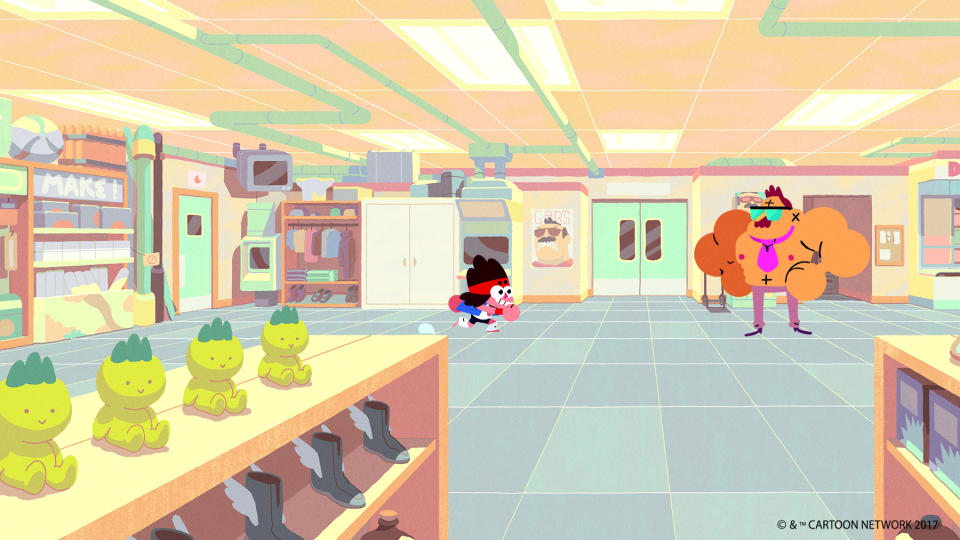
"We were given complete license to do our own art, our own music, our own writing, our own gameplay," Vella says. "And that was the focus. We didn't have to fight for that, that was the push."
That freedom is fast becoming a model for the video-game industry. The best licensed titles, like Batman: Arkham Asylum and Middle-Earth: Shadow of Mordor, have (almost) completely original stories. They're based on properties that people love, but have unique, refreshing takes on the world, characters and lore.
"Batman and Shadow of Mordor are important because they're showing other developers that you're not stuck in this little, itty-bitty bubble," Vella says. "We've made those games in the past. When we were starting out, we did all licensed work, and it was awful, it was an extremely taxing way to build because we were building with no room to move. It was: There's six months, there's a release that has to happen, there's a design that was written by somebody else already. And it has to be on brand, all of your models have to look exactly right ... the stuff that's great in games is everything that pushes past it."
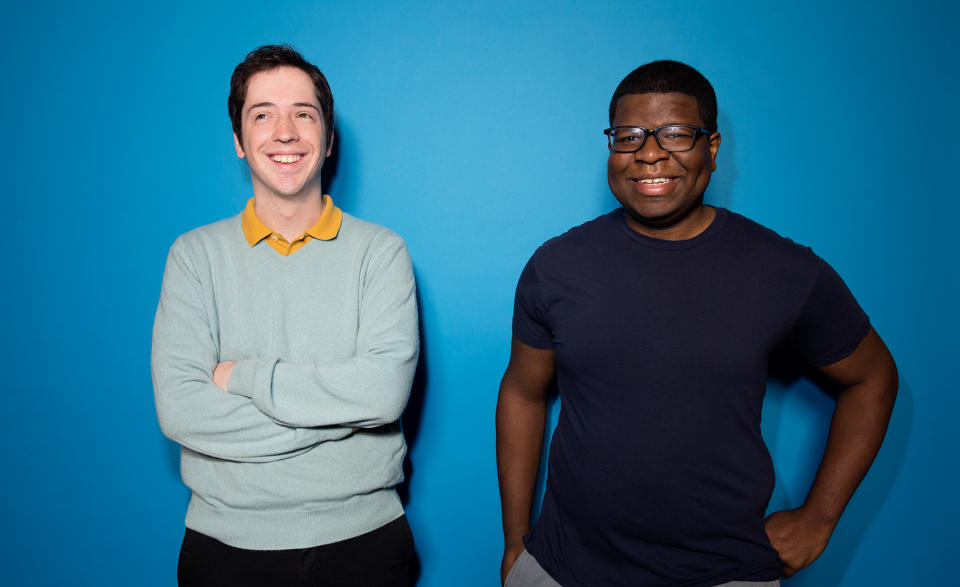
A different Cartoon Network
The project represents a shift in thinking at Cartoon Network. Video games are no longer an afterthought or secondary to animation. Shows are now conceived with the idea that they could be adapted and released in many different forms. It all started three years ago, when Rob Sorcher, Cartoon Network's chief content officer, decided to move the game production and publishing group inside the core content team. "At that point, we were no longer on the tail-end of the development process, but at the very beginning," Chris Waldron, vice president for games and digital products at Cartoon Network, said.
That setup allows Waldron and his team to approach show creators earlier in the development process. If there's a game-like reference or theme, it can be discussed and possibly nurtured into something that would work as a side project. Waldron can then look at signing a game developer who has the same sort of outlook and sensibilities as the show's creators.
OK K.O. is a unique case because of how long it spent in a conceptual development state. Nevertheless, it seems likely that this sort of collaboration will happen again, two teams with different backgrounds and areas of technical expertise working together to bring a charming world to life. It means that however you first experience OK K.O., whether that's the game or the show, you're getting something that's high-quality and stands on its own merits.
"A dream for us is for someone to play the game having never even seen the show and just be like, 'What a cool game!' And get interested in the characters that way. If they watch the show, great. But we want each thing to be the best thing for its individual medium," Jones said.

